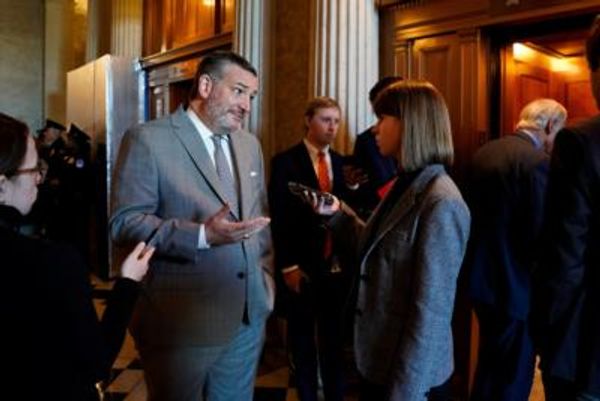
The Coalition appears to have landed on a neat solution to decarbonising Australia’s electricity grid – just swap out the coal plants for nuclear.
Writing in the Australian newspaper, the shadow climate change and energy minister, Ted O’Brien, said such a plan would reduce the need to spend billions on new transmission lines that would connect solar and windfarms to the grid.
O’Brien wrote he had visited Wyoming, where the Bill Gates-backed company TerraPower was planning a demonstration nuclear power station on the site of a coal plant.
The idea was backed by the Australian itself in an editorial that said the Coalition’s “timid embrace of nuclear must be urgently considered”.
But what neither O’Brien, nor the Australian, mentions is the cost of the plant to build and the time that’s available to do it.
The Albanese government wants 82% of the generation capacity in the national electricity market to be powered by renewables by 2030.
Construction hasn’t started yet on TerraPower’s demonstration plant and it isn’t expected to start producing power until late 2029 (already pushed back almost two years without work having even started).
The cost? The Australian doesn’t say this ether but, according to TerraPower, a budget of more than $6bn is available for the Wyoming project – shared 50/50 between the company and the federal government. The plant’s capacity is 350MW – less than a quarter the size of many coal plants.
Future versions of the technology – if it succeeds – would probably get cheaper. But by then the expectation is that Australia’s electricity grid already would be running on very high levels of renewable electricity.
Argument for delay?
In a pro-nuclear editorial, the Australian wrote that in a “properly planned energy transition”, policymakers should consider technology “that could reduce greenhouse gas emissions using existing network infrastructure”.
According to the Australian energy regulator, the transmission network that forms part of the national electricity market is an asset worth $22.8bn.
Much of that asset has been built and designed to cater for fossil fuel generation – mostly coal – which needs to be phased out to meet the country’s climate targets (and is also being pushed out by cheaper renewables whose fuel price is essentially zero).
The government has promised $20bn in finance to upgrade the grid to accommodate renewable energy generation and storage.
But the pace at which you could theoretically deploy the kind of “small modular reactor” nuclear plants being advocated – but not yet commercially available – would mean sitting on your hands until at least the end of the decade in the hope that the SMRs eventuate and are not eye-wateringly expensive.
When the Australian and the Coalition argue for an energy transition that uses “existing infrastructure”, they’re arguing against renewables, and for delay.
True costs?
In two columns in recent weeks, the Australian’s Claire Lehmann has attacked a report from the CSIRO, saying one metric that’s used to illustrate how much different generation technologies cost per megawatt hour doesn’t account for the extra money spent in the network to accommodate renewables.
The metric – known as the levelised cost of energy (LCOE) – in the GenCost report shows that solar and wind installed now (in a grid mostly designed for fossil fuels) are easily the cheapest.
The report treats the significant costs for transmission and storage up to 2030 as “sunk” – that is, already committed. After 2030, the GenCost report does estimate the extra costs of integrating renewables but still sees them as the cheapest option – and roughly half the price of nuclear.
Tennant Reed, the director of climate change and energy at the Australian Industry Group, questions the focus on LCOE. He says it is an imperfect measure – an issue acknowledged by GenCost – and has a history of being critiqued by groups.
Reed says many people who are engaged in energy issues “go through a teenage phase of thinking that levelised cost of energy is the most important thing in the world” and thinking it proves more than it actually does.
“It’s a rough guide, but it’s not the basis for any decisions,” he says. “There’s no effort to conceal anything here.”
Communist takeover?
In case you missed it, US conspiracy theorist Alex Jones was ordered to pay almost US$1.5bn last year after claiming the 2012 mass killing of 26 staff and students at the Sandy Hook elementary school had been faked (he’s since acknowledged it happened).
The One Nation senator and climate science denier Malcolm Roberts was given almost an hour on the flagship show on Jones’s InfoWars network – the Alex Jones Show – last week.
“He’s a gift to Australia and gift to the world,” said the guest host on the show, introducing Roberts.
What did the gift bring?
It’s not really the kind of rhetoric you can factcheck but, for the record, Roberts told viewers the United Nations and the World Economic Forum were “trying to control and limit energy” and they wanted to “control everything that we eat”.
“They are pushing a communist takeover,” Roberts said. “What they are wanting is global control. They’re not my words. They’ve said that.”
I don’t think they have.







